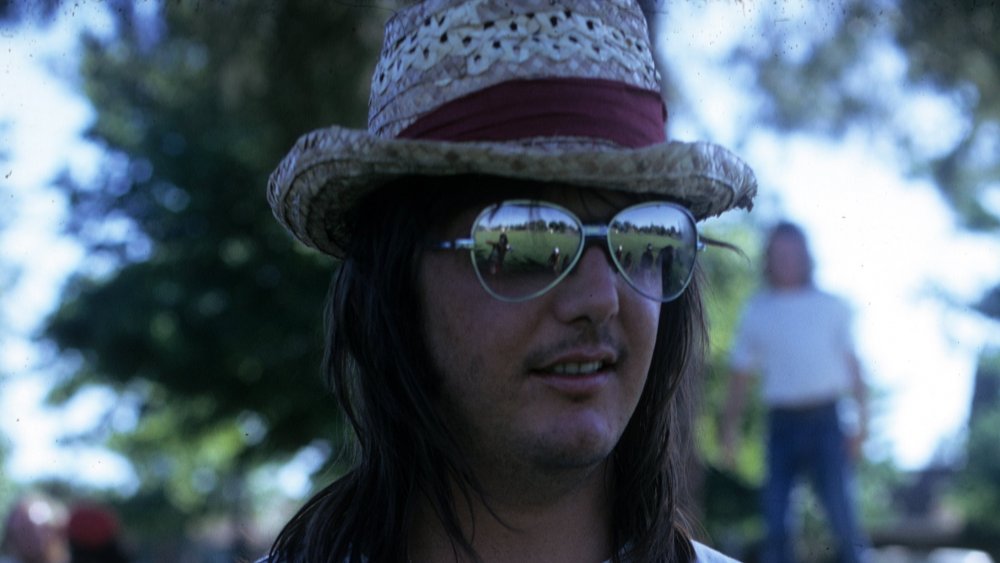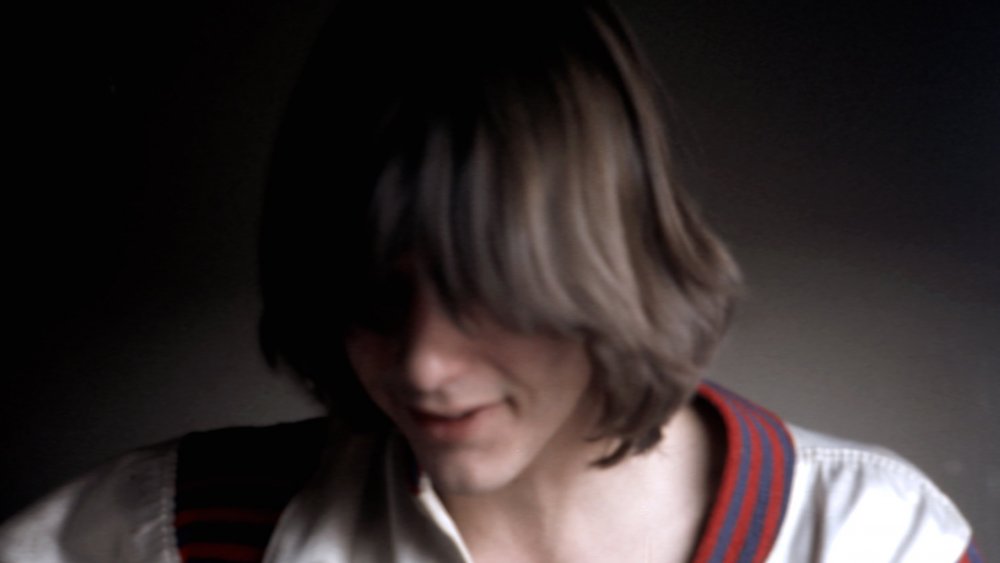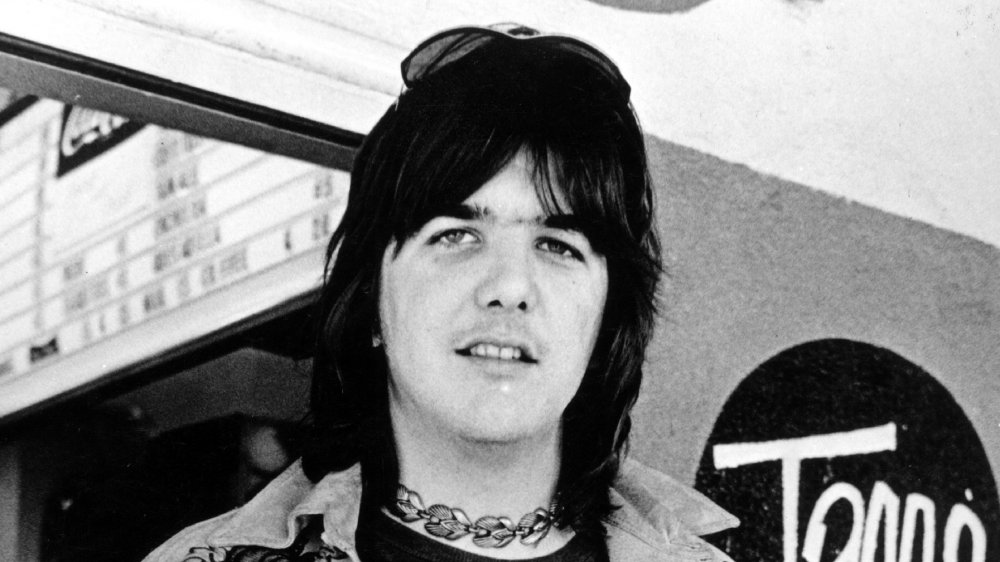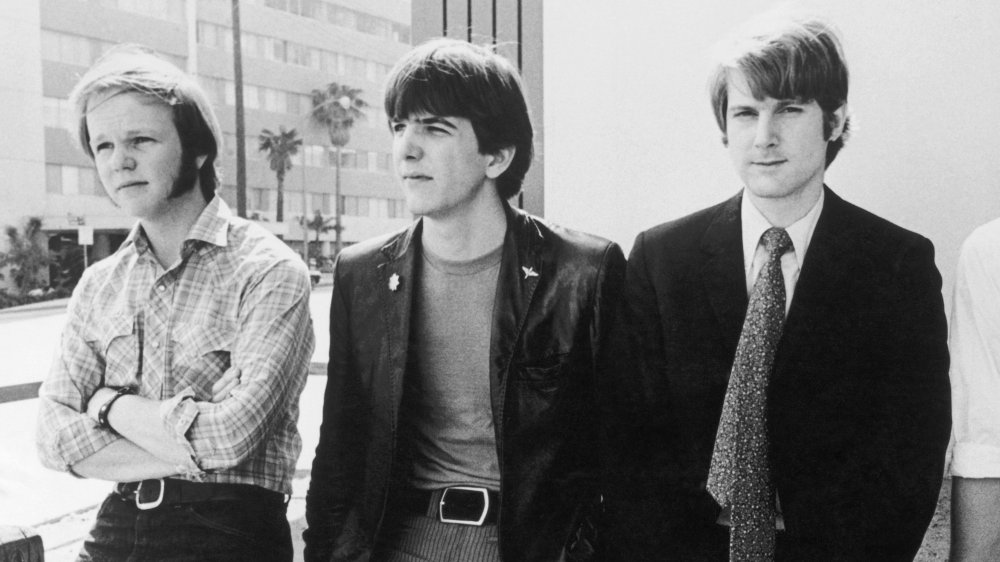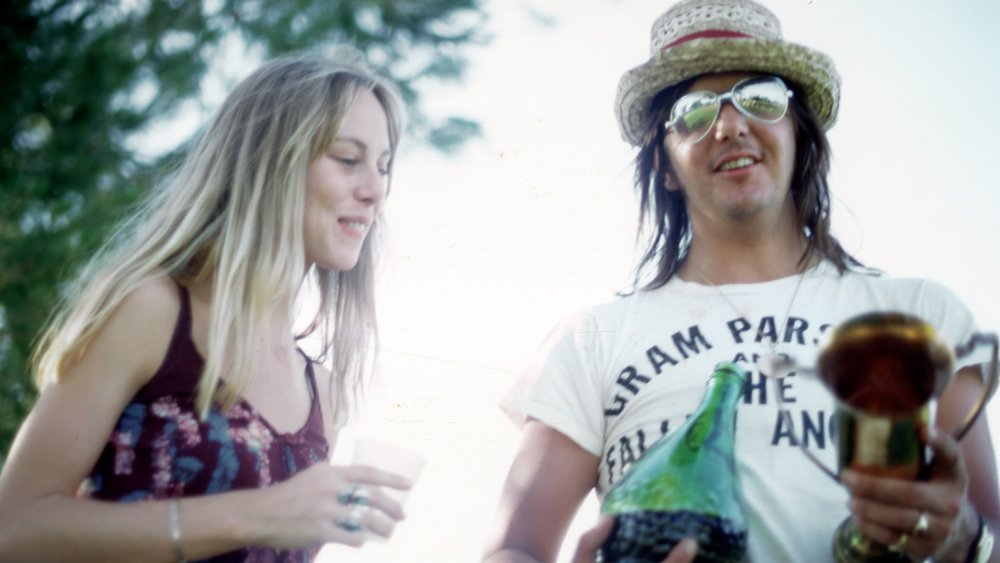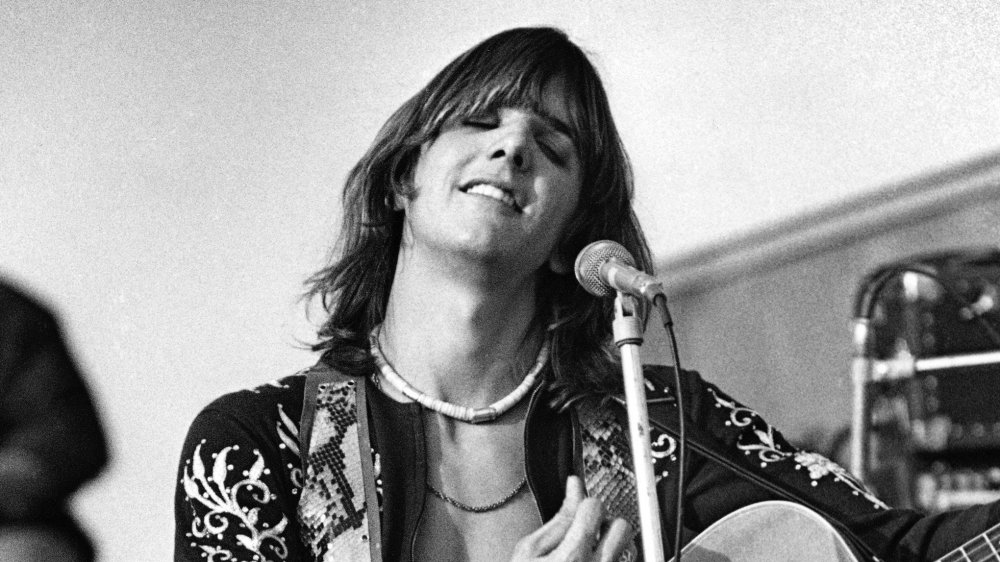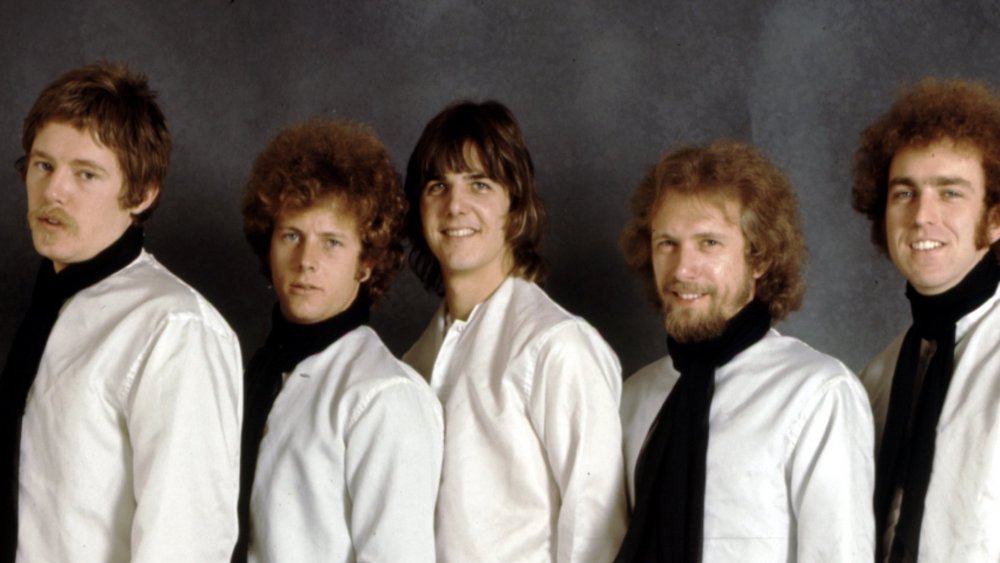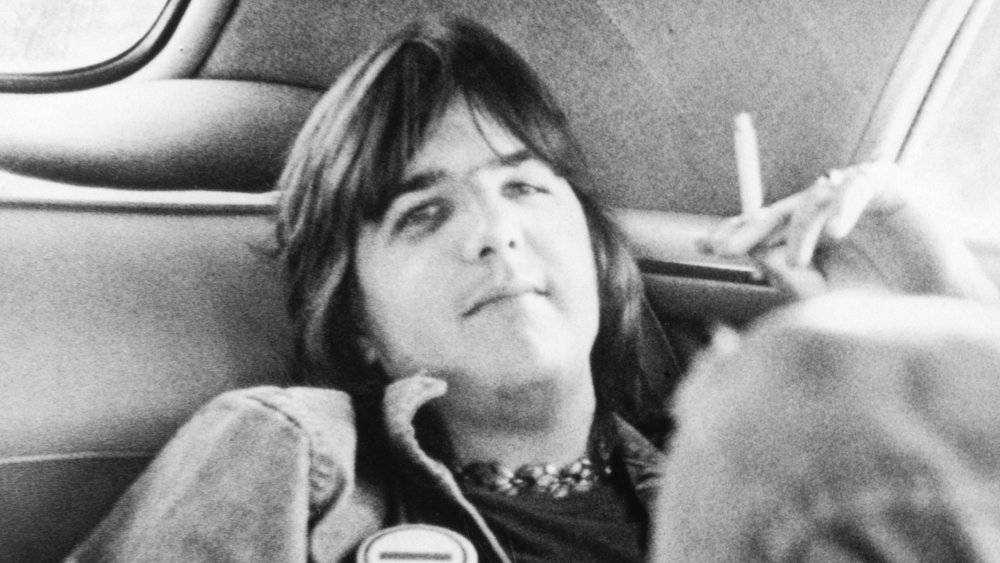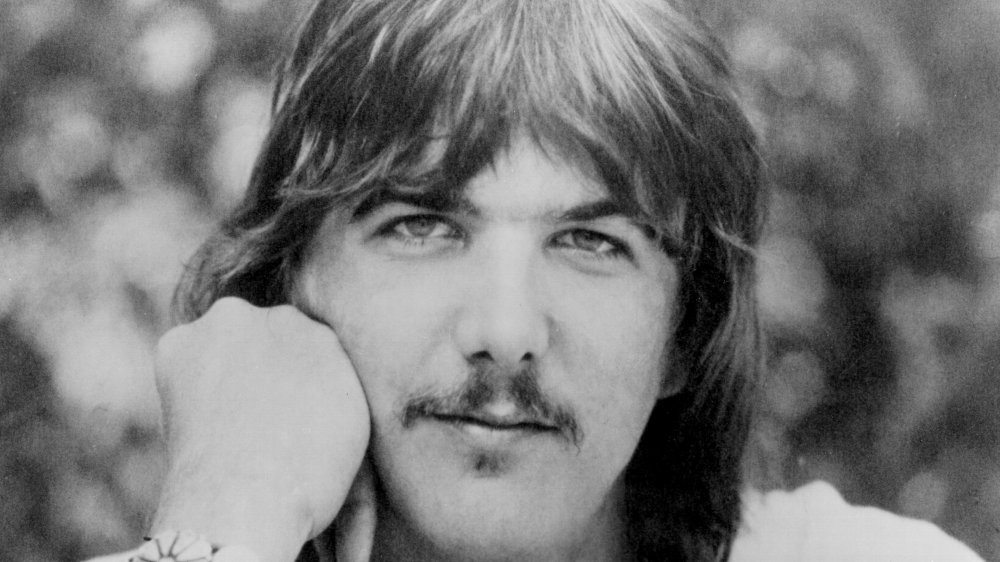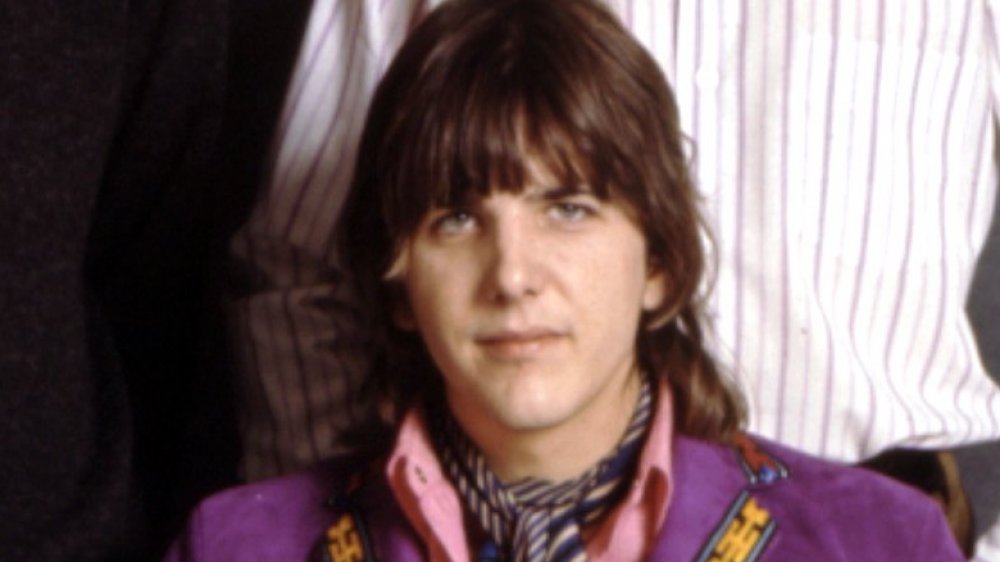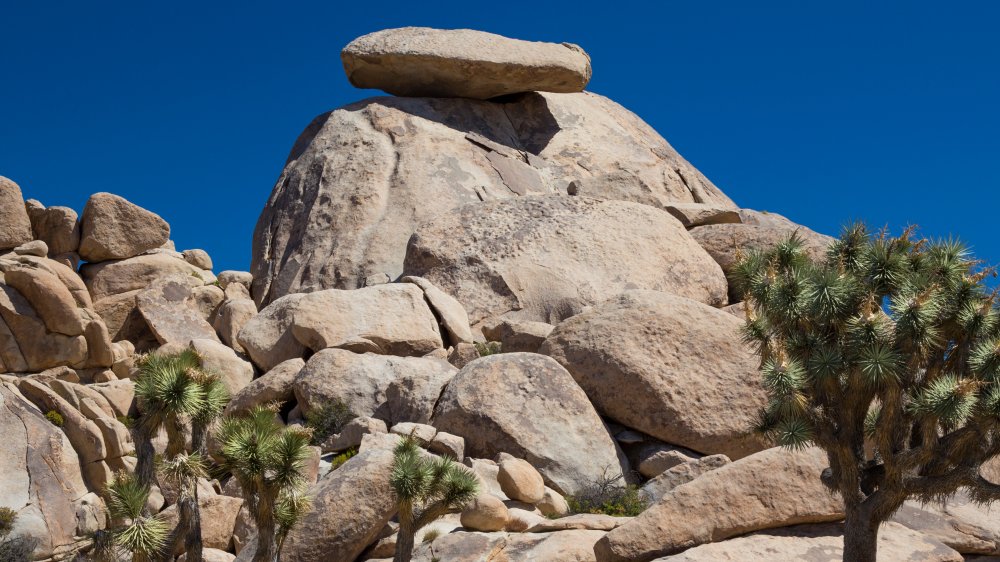The Tragic Real-Life Story Of Gram Parsons
For decades, musicians have been using country music tropes to flavor their styles to create something new and unique. But long before Lil Nas X's "Old Town Road," the "red dirt country" movement, "alt-country" acts like Wilco, the Eagles' Western sound, or even the '70s Southern rock of Lynyrd Skynyrd, there was Gram Parsons. The poetic songwriter and powerfully emotive singer from Florida, as a member of the Byrds and Flying Burrito Brothers, and with his own solo releases, virtually single-handedly invented "country rock." Although, he preferred to call the conception (which also possessed elements of jazz, soul, and R&B) "Cosmic American Music." No matter its name, Parsons has, directly and indirectly, influenced countless musicians over the past 50 years in the worlds of rock, pop, country, and everything in between.
Fittingly and unfortunately, Parsons lived a life that straddled genres, too. He over-indulged and got himself in trouble like a rock star, but he experienced dozens of country songs worth of heartbreak, pain, and sadness. Here's a look into the tragic and short life of Gram Parsons.
Gram Parson was raised by parents with depression and alcoholism
Gram Parsons — or rather Ingram Cecil Connor III — was born in the post-war baby boom of the 1940s in Florida to mother Avis Snively and father Ingram Connor, a man known to his friends and family as "Coon Dog." Both of the future musician's parents came from prominence. According to David Meyer's Twenty Thousand Roads, his mother was the daughter of Florida citrus tycoon and Southern real estate magnate John Snively, while his father, Ingram Cecil Connor II, was a famous, heavily decorated World War II pilot with the Army Air Corps who was at Pearl Harbor the day it was attacked in 1941. He saw lots of active combat, dogfighting with Japanese planes in the Pacific theater, earning a discharge and a ticket home after contracting malaria in 1944. He also developed a significant dependence on alcohol. Still, Connor II grew wealthy working as a sales rep for hardware companies and in his father-in-law's fruit business.
By 1958, the demons faced by Parsons' parents could no longer be ignored. Avis Snively, already a heavy drinker, added pills to her regimen of self-medication, likely amphetamines. Parsons' father also put away lots of alcohol and masked serious depressive issues. On December 23, 1958, after putting his wife and two kids on a train to spend Christmas with relatives, his father shot himself in the head. Gram Parsons was 12 years old.
Gram Parsons' mother died young
Within a year of the death of Ingram "Coon Dog" Connor by his own hand at Christmas, his widowed wife and suddenly single mother of two young children, Avis Snively Connor, remarried. She fell in love with a man named Robert Parsons, who worked in the Cuban citrus industry and was, per David Meyer's Twenty Thousand Roads, "a silky dresser, a smooth talker, a polo-club charmer with shaky finances." Avis Parsons continued to drink heavily, leading young Gram to develop a close relationship with the other adult in the house, his new stepfather. The two got along, and Parsons officially adopted Gram and his sister, named Avis like her mother, and Ingram Connor III became Gram Parsons.
June 5, 1965 was a monumental day for Gram Parsons. That's the day he graduated high school, and it's also the day that his mother died at age 41 in a hospital in Winter Haven, Florida. The cause of death: cirrhosis of the liver, logical for a heavy drinker but tragic nonetheless. The Snively family doctor conducted the autopsy mainly to put to rest rumors among that side of the family that Robert Parsons (who had tainted the marriage with an affair) had killed her, as he reportedly had brought his wife forbidden booze while she lay sick and dying in the hospital.
He quickly flew into and out of the Byrds
The Byrds was one of the most successful mid-1960s rock bands. The group's sound evolved over the decade, moving from harmonious, jangly-guitar-driven pop-rock into more experimental fare. The group took a major turn into revisionist country music in 1968, when, according to Vice, bassist Chris Hillman convinced Gram Parsons, then of the International Submarine Band, to join the group. Parsons — or at least his progressive ideas about the merging of rock with other American musical forms — soon took over the Byrds, as evidenced by his dominant guitar work on the proto-country rock album Sweetheart of the Rodeo. What should have been Parsons' big break — joining a famous band already in progress — didn't work out. He left the band after six months. The main reason he quit, according to Far Out: He was adamantly opposed to the Byrds' planned tour of South Africa, at the time under apartheid rule.
Not long after his acrimonious exit from the Byrds, Gram Parsons formed a new band, the Flying Burrito Brothers with, of all people, disgruntled Byrds bassist Hillman. After recording some well-received if poorly-selling material, Parsons' commitment wavered. Hillman told Billboard that Parsons was "inconsistent," and that he preferred partying to making good music. Hillman, who was devoted to furthering that country-rock sound, fired Parsons from his own group.
Gram Parsons had a troubled romantic life
Shortly after recording his first album with the International Submarine Band in 1966, Gram Parsons met David Crosby... and Crosby's girlfriend, Nancy Ross, who decided to partner up with Parsons instead. In the brief year that Ross and Parsons were together, they had a daughter, Polly. Parsons got over Ross fairly quickly.
Keith Richards threw Parsons a 23rd birthday party at Stephen Stills' Los Angeles home in November 1969, which is where the young rock star met Gretchen Burrell, a teen model from Newport Beach, according to Ben Fong-Torres' Hickory Wind: The Life and Times of Gram Parsons. They were instantly drawn to each other, according to David Meyer's Twenty Thousand Roads. By 1971, the couple had married. Just two years after that, however, the marriage, tumultuous from the start according to friends of the couple, was over. Living separate lives and in different homes, Parsons and Burrell were knowingly headed for divorce.
Burrell had given up her career as an actress and model for Parsons, who didn't want his wife to be a working woman. She acted in just one movie, Pretty Maids All in a Row opposite Rock Hudson, and appeared in one pictorial in Playboy, before quitting. "I didn't get to do nearly anything I started out to do," Burrell said, according to Fong-Torres. "My life sorta took a very strange turn there for a while...very unhealthy."
Gram Parsons played Altamont
The hippie counterculture threw two huge outdoor rock festivals in 1969: the iconic Woodstock and a show at the Altamont Speedway outside San Francisco in December 1969. According to the Los Angeles Times, about 300,000 people came to the poorly planned and pulled-off event, which lacked proper parking and sanitation capabilities. The Rolling Stones headlined the show, organized the free Altamont concert, and stocked the bill with groups like Jefferson Airplane, Santana, and the Flying Burrito Brothers, of which Gram Parsons — a close associate of the Stones' Keith Richards — was a principal member.
"We jumped at the chance to be a part of it," Burrito Brother Chris Hillman said. "But it was a bad day from the start." On the way to the show, the band was involved in a car accident and parked a mile from the speedway. They trudged through the increasingly agitated crowd to get to the stage. The day went from bad to unspeakably tragic when members of the Hells Angels motorcycle gang, hired to be security guards, tried to keep the peace with violent beatdowns of bad apples. By the time the Stones took the stage, things had descended into chaos, and a helicopter whisked the band (along with Parsons) safely away. During the flight, Mick Jagger and Parsons learned why the show fell apart: Hells Angels had stabbed to death 18-year-old attendee Meredith Hunter in front of the stage.
Gram Parsons' first attempt at a solo album is gone forever
In 1970, Gram Parsons became a solo act by default, having left both the Byrds and the Flying Burrito Brothers. On the bright side, he could pursue his musical ideas and whims without having to run anything by the committee-like atmosphere of a band, and he so he started working closely with Terry Melcher, the son of Doris Day. Melcher, according to David Meyer's Twenty Thousand Roads, was a recording industry gadfly associated with the Los Angeles music scene — he produced the Byrds' big hits "Turn! Turn! Turn!" and "Mr. Tambourine Man" and played on the Beach Boys' Pet Sounds. Parsons enlisted him to work on what was supposed to be his first album under his own name.
A handful of recording sessions went down, but they would ultimately wind up less than productive, on account of the hefty appetites for drugs of both Melcher and Parsons, according to their friend Eve Babitz. Tapes exist of these fated collaborative days, but unfortunately for hardcore Parsons fans and completists, they disappeared long ago. After the duo dropped the project, either Parsons or Melcher (it's not clear who) borrowed the tapes from the studio and never returned them.
Gram Parsons battled drug addiction
In 1968, the Byrds, with Gram Parsons in tow, hit England, and the musician met and became fast friends with Rolling Stones guitarist Keith Richards. "Like I know the blues, Gram Parsons knew country music — every nuance, every great country song that was ever written," Rolling Stones guitarist Keith Richards told Rolling Stone. "Also, he loved to get stoned. At the time that was an added plus." It was at the suggestion of the Stones that Parsons quit the Byrds — he didn't want to play in apartheid-ravaged South Africa. More or less homeless because of that decision, he moved in with Richards, and the two jammed around the clock. "He would also work very hard — harder than I ever did," Richards recalled. But, as they worked, the pair were ingesting copious amounts of intoxicating substances, particularly alcohol and for Parsons, opiates, which Richards says Parsons was well into before their friendship began. Parsons, it would seem, had inherited his parents' strongly addictive tendencies.
Personally, Richards says, Parsons and his bandmate Mick Jagger "never really clicked," but professionally, they did. His country influence (according to musical associate Pamela Des Barres) helped the Stones create the masterpiece "Wild Horses," and he accompanied the band when it decamped to France to record the 1971 album Exile on Main Street. According to The Fix, Parsons drug use got so out of hand — he was powerfully addicted to heroin by that point — that it made even the Rolling Stones uncomfortable. Gram Parsons was asked to leave the group's inner circle as a result.
The sudden death of Gram Parsons
In mid-September 1973, according to David N. Meyer's Twenty Thousand Roads, Gram Parsons was preparing to release his second solo album, Grievous Angel, tour, and file for divorce, when his road manager, Phil Kaufman, suggested the musician go relax and decompress at his favorite place: Joshua Tree National Park, the picturesque desert and preserve outside San Bernardino, California. Along for the therapeutic trip: Parson's girlfriend, Margaret Fisher, his assistant Michael Martin, and Martin's girlfriend, Dale McElroy. After checking in to room number eight at The Joshua Tree Inn, Parson took jaunts into nearby towns to drink in bars, then would return to his room to resume drinking heavily and consume some of the barbiturates he'd brought.
One evening, Parsons bought a large number of opiates from a woman who also injected the drugs into his system, not long after he'd also consumed a large bottle of whiskey and a number of pills, believed to be barbiturates. But it was all too much — Fisher and McElroy both tried to revive the dying Parsons, and shortly after midnight on September 19, an ambulance took him to a nearby hospital. Fifteen minutes later, he was declared dead — Gram Parsons was just 26 years old. According to an autopsy, he didn't die of a morphine overdose, but "drug toxicity" incurred via "multiple drug use" over the course of "weeks."
"If there was a day in my life I could take back, it would be that day," Fisher later admitted, per SF Weekly. "To see the light go out in somebody's eyes is not something ... to be shared."
Nobody cared much for Gram Parsons' music when he was alive
Multiple books about Gram Parsons have been published, and films both narrative and documentary about the late musician have been produced, but all those came decades after he died in September 1973. When his body gave out after extensive drug abuse at age 26, his passing merited a 155-word obituary in the New York Times that got the musician's age wrong. After all, Parson's career had been short — he'd only released one solo album when he died, with his second completed not long before his death, adding to his contributions to two Flying Burrito Brothers albums and one each from the Byrds and the International Submarine Band. None of those albums sold particularly well at the time — his debut G.P. didn't hit the American album chart at all, the Byrds' Sweetheart of the Rodeo peaked at a lowly #77, and the Flying Burrito Brothers' The Gilded Palace of Sin sold a mere 40,000 copies initially. The posthumous Grievous Angel barely made an impact at #195.
It took time for Parsons' talents to be appreciated and for his music to become popular after his death. In 2010, Rolling Stone placed him at #87 on its list of "100 Greatest Artists," and according to music critic aggregator Acclaimed Music, Grievous Angel is the 210th best album ever recorded. Sadly, Parsons never got to enjoy the widespread praise, cursed like artistic predecessor Vincent Van Gogh to remain obscure and overlooked during his short life (outside of rock star circles, that is).
The postmortem adventures of Gram Parsons
Gram Parsons spent his last days at Joshua Tree, one of his favorite spots, and according to Ben Fong-Torres' Hickory Wind: The Life and Times of Gram Parsons, the singer-songwriter had expressed that upon his death, he wanted it to be his final resting place. Not only did he want his ashes spread there — specifically at the formation known as Cap Rock — he wanted to actually be cremated at the spot, too.
According to David N. Meyer's Twenty Thousand Roads, Parsons's stepfather, Robert Parsons, made arrangements for the late musician's body to be flown to Louisiana, where he lived. When Parsons' road manager Phil Kaufman found out about that, he was determined to see to his friend's final wishes. He called up Continental Mortuary Air Service and found out that Parsons' body would arrive at Los Angles International Airport, and head to New Orleans from there. So, Kaufman, looking official with a hearse, intercepted the truck bearing Parsons' coffin and told the driver that the singer's family had changed their minds and to pass off the body to him.
The driver did just that, leaving Kaufman and Parsons' assistant, Michael Martin, to burn the late singer-songwriter's corpse out in the desert. Fires aren't permitted at Joshua Tree, and campers reported smoke, leading to the arrest of Kaufman and Martin, who in the end paid a fine of $1,300. What was left of the partially-charred coffin did eventually make its way to Louisiana, and Parsons was buried in the Garden of Memories cemetery.
